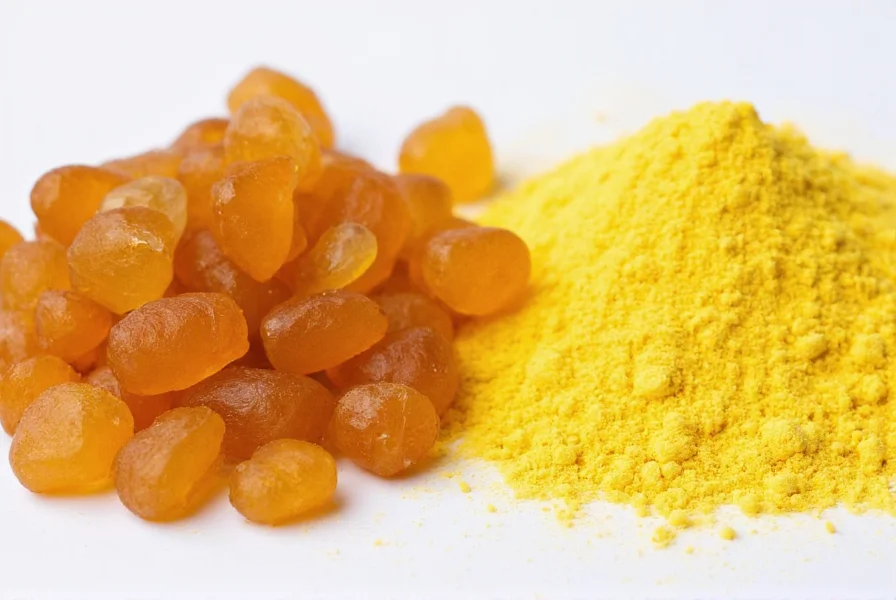Asafoetida's journey from ancient remedy to modern kitchen staple reveals why this unusual spice remains indispensable in many culinary traditions. Understanding what is asafoetida requires examining both its scientific properties and cultural significance across centuries of use.
Botanical Origins and Historical Significance
Scientifically classified as Ferula assa-foetida, this spice comes from a flowering plant native to the arid regions of Afghanistan and Iran. The resin is harvested by making incisions in the plant's roots, allowing the milky sap to exude, dry, and harden into a gum oleoresin. Historical records show asafoetida was traded along ancient spice routes as early as the 6th century BCE, valued both as a culinary ingredient and medicinal remedy.
Ancient Greek and Roman physicians including Dioscorides and Galen documented its use for digestive issues and respiratory ailments. In Ayurvedic medicine, asafoetida (known as hing in Hindi) has been used for millennia to treat flatulence, asthma, and intestinal worms. Its antimicrobial properties likely contributed to its historical medicinal applications.

Physical Characteristics and Available Forms
Raw asafoetida appears as amber to dark brown resinous lumps with an intensely pungent smell reminiscent of sulfur or rotten eggs. When processed for culinary use, it's typically mixed with flour or rice starch (usually 10-20%) to reduce potency and prevent clumping. This creates the familiar yellow powder found in most grocery stores.
| Form | Characteristics | Shelf Life | Best Uses |
|---|---|---|---|
| Raw resin (lump) | Strongest flavor, amber-colored pieces | 2+ years | Traditional preparations, medicinal uses |
| Processed powder | Milder, yellow color, mixed with starch | 1-2 years | Everyday cooking, tempering |
| Asafoetida water | Resin dissolved in water | 1 month refrigerated | Marinades, sauces |
Proper storage is essential for maintaining quality. Keep asafoetida in an airtight container away from light and moisture. The powder form typically remains potent for 1-2 years, while raw resin can last significantly longer when properly stored.
Culinary Applications and Flavor Transformation
What makes asafoetida truly remarkable is its flavor transformation during cooking. The raw compound ferulic acid breaks down when exposed to heat, converting the initially unpleasant odor into a savory, umami-rich flavor profile. This chemical reaction explains why asafoetida is almost always added at the beginning of cooking, typically through tempering in hot oil.
In Indian cuisine, asafoetida serves several critical functions:
- Provides onion-garlic flavor in dishes where these ingredients are avoided for religious or dietary reasons
- Enhances digestibility of legumes and cruciferous vegetables
- Acts as a flavor amplifier for other spices
- Contributes to the distinctive taste of many vegetarian dishes
Traditional applications include:
- Tempering for dals (lentil dishes)
- Essential ingredient in sambar and rasam
- Key component in many vegetable curries
- Flavor base for pickles and chutneys
- Traditional remedy for indigestion when mixed with water
Substitutes and Alternatives for asafoetida
When exploring what is asafoetida used for, many home cooks seek alternatives when this specialty spice isn't available. While no substitute perfectly replicates asafoetida's unique flavor transformation, several options can approximate its function:
- Garlic and onion powder combination (1:1 ratio) - works best in cooked dishes where the allium flavors can mellow
- Fenugreek seeds - provides some of the savory depth but lacks the sulfurous notes
- Chinese mustard powder - offers a similar pungency profile in small amounts
- Fermented black bean paste - provides umami complexity in Asian-inspired dishes
Important note: Asafoetida's unique chemical composition means substitutes work best in specific contexts. For traditional Indian recipes, especially those following Jain dietary restrictions that prohibit onions and garlic, no substitute truly replaces authentic asafoetida.

Health Considerations and Scientific Research
Traditional medicinal systems have long valued asafoetida for digestive health. Modern research partially supports these traditional uses, with studies indicating potential benefits:
- Digestive aid - Contains compounds that may reduce intestinal gas production
- Anti-inflammatory properties - Certain constituents show promise in laboratory studies
- Antimicrobial effects - Demonstrated activity against certain bacteria and fungi
- Respiratory support - Traditional use for asthma and bronchitis has some scientific backing
However, scientific evidence remains limited, with most studies conducted in laboratory settings rather than human trials. The FDA considers asafoetida generally recognized as safe (GRAS) when used as a food ingredient, though concentrated medicinal doses may interact with certain medications.
Practical Usage Guide for Home Cooks
Understanding what is asafoetida means learning how to use it properly. This potent spice requires careful handling:
- Start small - Use just a pinch (about 1/16 teaspoon) for four servings
- Always cook it - Add to hot oil at the beginning of cooking to mellow the flavor
- Measure carefully - Too much creates an unpleasant medicinal taste
- Store properly - Keep in an airtight container away from light and moisture
When shopping for asafoetida, look for products with minimal additives. Pure resin commands a higher price but offers superior flavor. The powder form (mixed with rice flour or wheat flour) provides better consistency for everyday cooking. For authentic Indian recipes, ensure you're purchasing food-grade asafoetida, as some products are intended solely for medicinal use.
Frequently Asked Questions About Asafoetida
What is asafoetida made of?
Asafoetida is a resinous gum extracted from the roots and stem of Ferula plants, primarily Ferula assa-foetida. The raw resin is often mixed with small amounts of rice flour or wheat flour (typically 10-20%) to prevent clumping and moderate its potency for culinary use.
Why does asafoetida smell so strong?
Raw asafoetida contains sulfur compounds that produce a pungent odor reminiscent of rotten eggs. This strong smell transforms completely when cooked, breaking down into savory, umami-rich compounds similar to leeks or garlic. The chemical change occurs when the resin is exposed to heat during the tempering process.
Can I use asafoetida if I'm allergic to garlic or onions?
Asafoetida comes from a different plant family (Apiaceae) than garlic and onions (Allium family), so it's generally safe for those with allium allergies. However, some people with severe sulfite sensitivities may react to asafoetida's sulfur compounds. If you have serious food allergies, consult with a healthcare provider before trying asafoetida.
How much asafoetida should I use in recipes?
Asafoetida is extremely potent, so use it sparingly. For most recipes serving 4-6 people, start with just a pinch (about 1/16 teaspoon) of powder or a small pea-sized piece of resin. You can gradually increase to 1/8 teaspoon if needed, but be cautious as too much creates an unpleasant medicinal flavor. Remember that the flavor intensifies during cooking.
Is asafoetida the same as hing?
Yes, asafoetida and hing refer to the same spice. "Hing" is the Hindi and Urdu name for asafoetida, which is the term most commonly used in Indian grocery stores and recipes. The word comes from the Sanskrit "hingu." Both terms describe the resinous gum from Ferula plants used extensively in South Asian cuisine.











 浙公网安备
33010002000092号
浙公网安备
33010002000092号 浙B2-20120091-4
浙B2-20120091-4